Column One: 50 years after Apollo 11, the moon’s allure still resonates
- Share via
Loudon Wainwright Jr., father and grandfather of songwriters and musicians, was a prominent literary balladeer of 1960s culture, and — just as Americans might tire of 50-year commemorations of humankind’s greatest space adventure — he felt a creeping sense of tedium, almost boredom, at Cape Kennedy as he awaited the launch of Apollo 11.
But the night before the liftoff, Wainwright heard this observation:
“What we will have attained when Neil Armstrong steps down upon the moon is a completely new step in the evolution of man. For the first time, life will leave its planetary cradle, and the ultimate destiny of man will no longer be confined to these familiar continents that we have known so long.”
Those words were spoken by Wernher von Braun, and they jolted Wainwright, stirred him, as he put it in a Life magazine essay, “in ways that no amount of engineering brilliance, astronautical competence, and the cool confidence of the entire Apollo project ever could.’’
Consider what we know now since Armstrong fulfilled President John F. Kennedy’s pledge to send an American to the moon and return him safely to Earth; that we now know that von Braun, brilliant developer of the Saturn V booster that propelled Apollo 11, almost certainly employed slave labor developing missiles for Hitler’s Nazi Germany; that we now know that since that starry, starry night so long ago, America, which had not given plausible thought in a century to removing a president, has considered impeaching three chief executives and actually did it once; and that the White House that glowed with Kennedy’s shining vision would be shrouded in dark questions about Lyndon B. Johnson’s credibility, Richard Nixon’s culpability and Donald Trump’s mendacity.
For we live in a different world from the one whose surly bonds Armstrong, Buzz Aldrin and Michael Collins — the Tinker, Evers and Chance of space travel — escaped in July 1969.
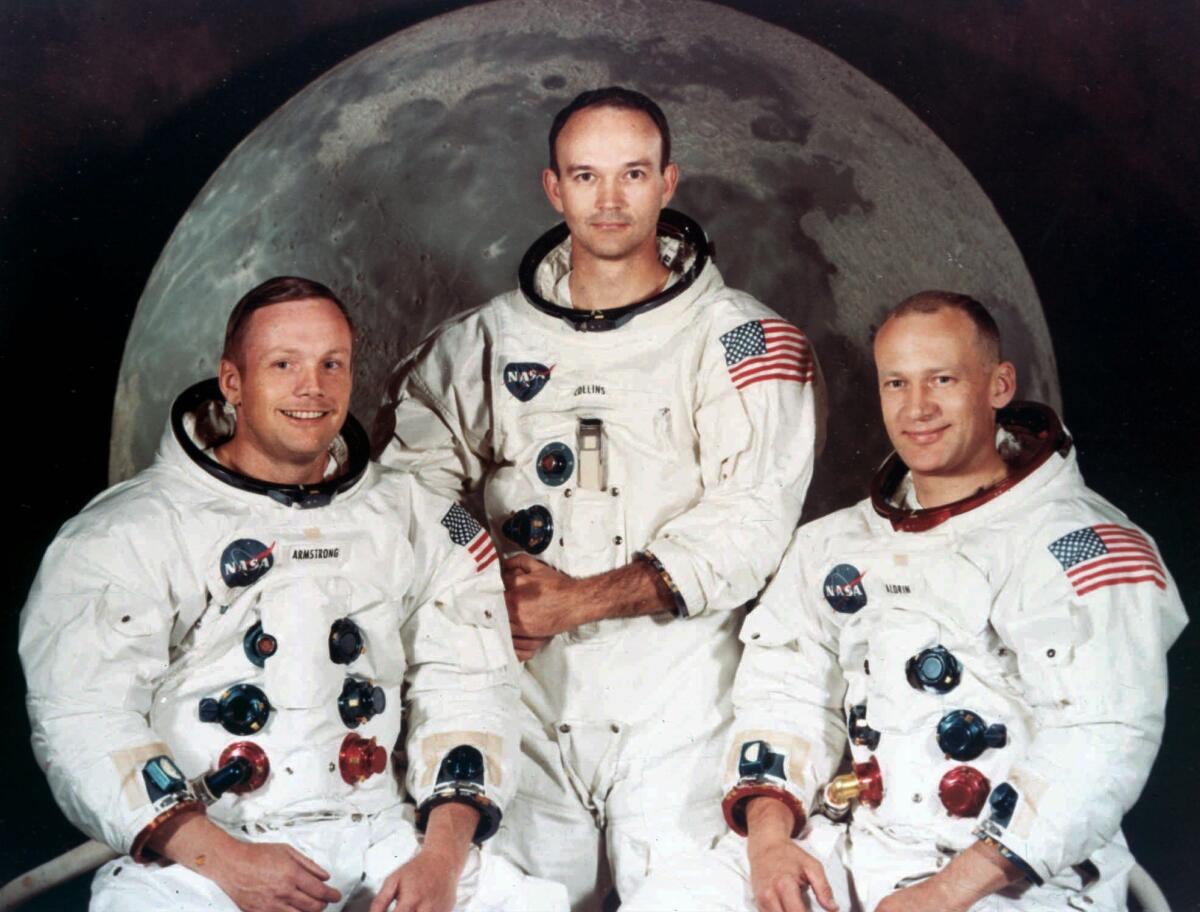
Their adventure unfolded a month before the Woodstock music festival and bacchanalia, a decade before the Iranian Revolution presaged the Islamist rebellion that would reshape global politics, two decades before the collapse of the Berlin Wall signaled the end of 20th century communism, three decades before both female athletics and American soccer came of age with the U.S. women’s victory in the World Cup, four decades before the inauguration of the first black president would stand as a shimmery landmark in the nation’s passage, and five decades before wildly ranging forest fires and a synagogue shooting would leave sad black marks on the sunny character of California.
And so maybe now — amid the grief of mass shootings, the divisions of American politics and the distractions borne of handheld phones that have 1,300 times more processing power than the computer on board the Command Module — the 50th anniversary of the lunar landing on July 20, and the realization of one of humankind’s longest-held dreams, is coming just in time.
Maybe we need to think again about what “coelliptic sequence ignition” means; maybe we might wonder again at how a contrivance of humankind could travel through the visible night sky between Ursa Major and the Regulus star in the constellation of Leo; maybe we need to revisit the risks Aldrin took on his annual 1969 salary of $18,622.56; maybe we ought to consider the achievement of creating a portable life support system backpack that supplied cooling water to the knitted nylon-spandex garment the astronauts wore on the lunar surface.
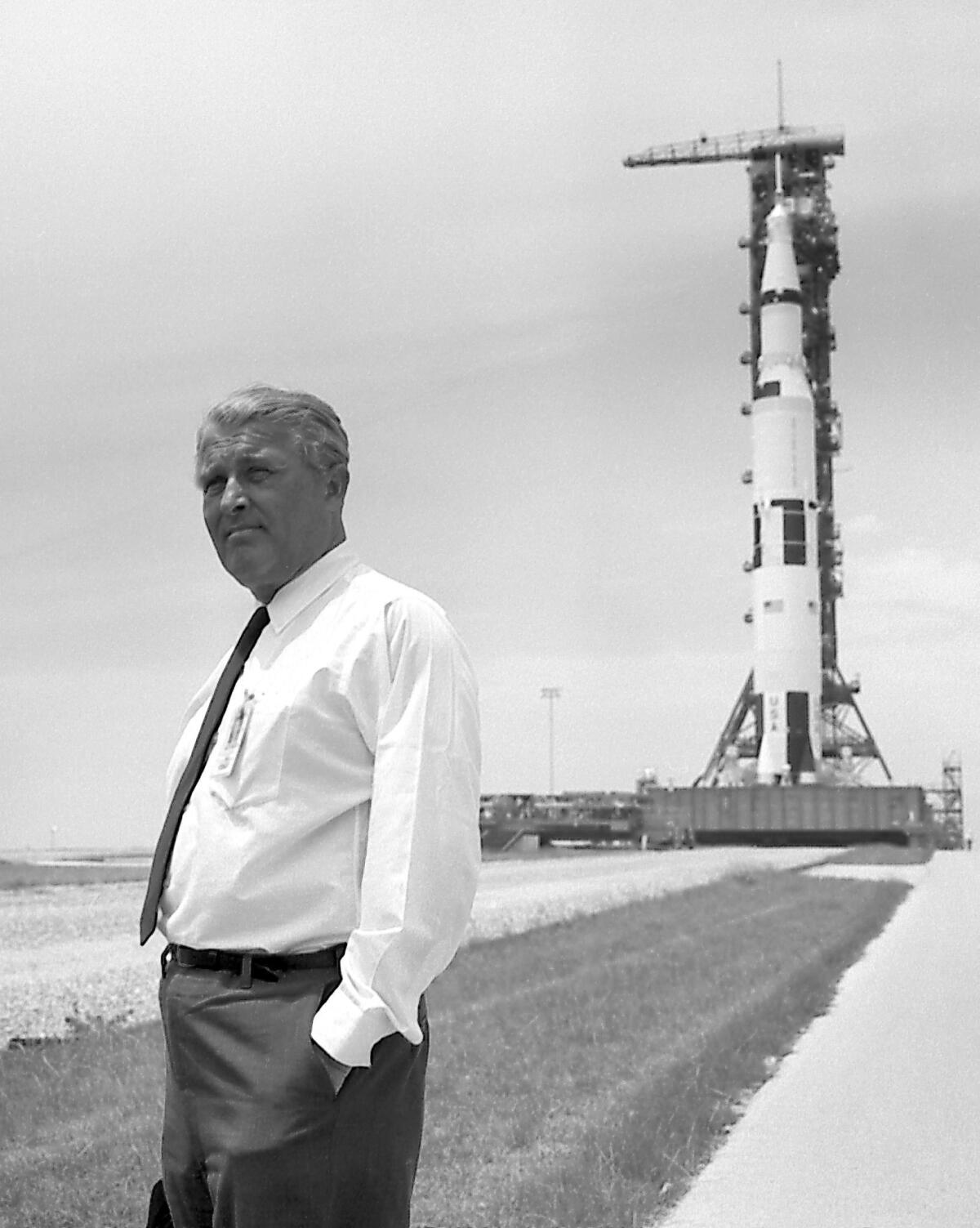
Maybe, moreover, we need to pause in astonishment once more at how a 12-pound Westinghouse color camera with a zoom lens and a 3-inch monitor that displayed a 525-line, 30-frame-per-second signal could change the perspective on our species, on our world, and on the lives of the third of today’s United States population that was alive during this spectacle and that witnessed it, from afar and in breathless wonder, in real time.
As soon as Armstrong stepped off the lunar module, he was supposed to have grabbed a sample of soil in case he had to leave in an emergency. “But he took pictures instead,” said Jennifer K. Levasseur, museum curator of the space history department at the Smithsonian National Air and Space Museum. “His first consideration was an image. He knew he couldn’t go all the way to the moon without having a picture to prove he had been there.”
If revisiting those photos isn’t enough to jolt us out of our commemoration ennui, maybe it takes a Canadian to help us understand the impact of what happened 50 summers ago. Maybe the message of Marc Garneau, who on that very day in 1969 was on a sailboat in the English Channel, will shake away our cobwebs of complacency:
“On a clear night I looked up at the moon in one of the oldest forms of transport, trying to get my mind around Neil Armstrong getting out of his spacecraft and walking on the moon. This was an inspiration to so many of us. I always wanted to be part of an adventure.” Before he became Canada’s minister of transport, Garneau was an astronaut and spent 29 days in space.
Maybe the recollections of one of the African Americans known as “computers” — the women recruited by NASA and featured in the “Hidden Figures” film — will help frame the drama. Listen to Christine Darden:
“Sputnik went up when I was in high school, and I remember the big headline and felt all the trauma of our being behind in space. But when the astronauts finally stepped on the moon and I saw that snowy image, I knew that this had been done by people I worked with.” She went on to write a computer program — by hand in seven months — that helped reduce the sonic boom of a jet.
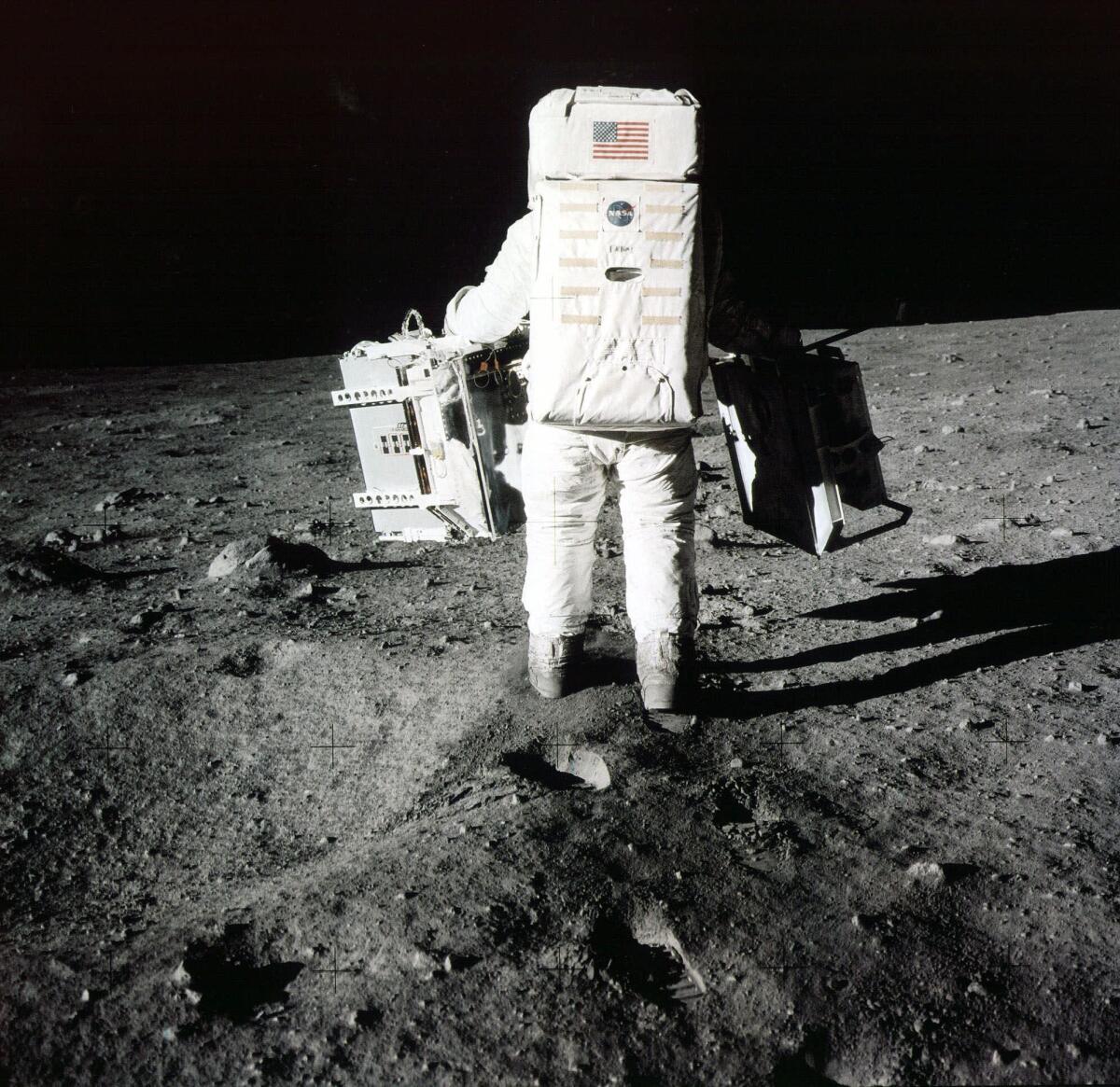
Or maybe the recollections of Kathryn Sullivan will do:
“The drama captured me, the adventure bent my mind. It absolutely, positively never occurred to me that all the astronauts were male. They were people, and I loved the idea that humans had lives like these astronauts — and I wondered if I could have a life like that.”
Before she became assistant secretary of Commerce and acting administrator of the National Oceanic and Atmospheric Administration, Sullivan made three space shuttle missions and was the first American woman to take a spacewalk.
Perhaps we might consider the experience of Jay Apt, then a Harvard University student who had launched makeshift rockets from his Pittsburgh neighborhood, who won a model-rocket championship, and who traveled to Florida to witness the Saturn V climb into the sky and then to the heavens:
“I was standing three miles away and the low frequencies shook my insides. I could feel my internal organs moving around.” More than that was stirring. Because before he became the co-director of the Carnegie Mellon Electricity Industry Center, he flew four shuttle missions, one as commander.
Finally, perhaps we consider one more thing:
That no one has stepped on the moon since the last of the dozen Americans sank their feet in the lunar surface 47 years ago.
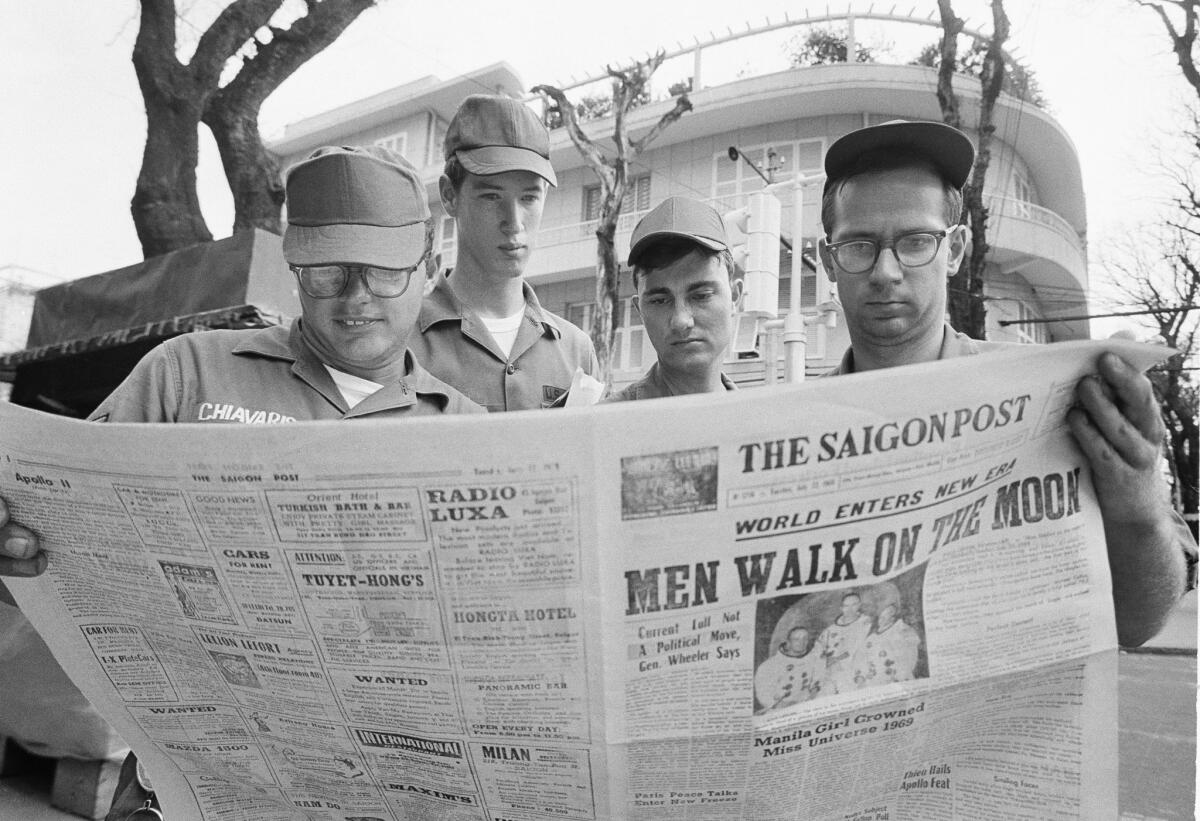
We observe the 50th anniversary of the lunar landing in the year marking the 500th anniversary of the death of Leonardo da Vinci. It is a mere coincidence, but the overlap is apt. The achievement of leaving our earthly home, as von Braun so hauntingly put it, will be remembered as artfully accomplished, scientifically significant, morally consequential.
“All of the existential questions that have plagued us throughout our lives come into focus with these men, now in their 90s and looking back on this experience with perspective,” said Basil Hero, whose “The Mission of a Lifetime: Lessons from the Men Who Went to the Moon” was published in April. “It changed their lives, of course. Looking at Earth from deep space, seeing the massive void that surrounded them, just rewired their brains. They never looked at the Earth, or themselves, the same way again. They spoke about the common good, about doing things bigger than themselves.”
There were, from the beginnings, great complexities to the effort, engineering miracles, such as — who thought of this, or figured out how to accomplish it? — having the Command Module direct its oxygen valve to open and establish a cabin pressure at least 0.5 pounds per square inch greater than that of the lunar module after the astronauts returned from the moon’s surface to the vehicle awaiting them in lunar orbit.
NASA scientists planned for every eventuality they could conceive, knowing that there was no resupply option once the astronauts lifted off from Launch Complex 39.
Read More: Kennedy, Johnson and Nixon: How their presidencies shaped the mission to the moon »
They sent oral thermometers, motion-sickness and pain-suppression injectors, eye drops, nasal sprays, 60 antibiotic pills and eight anti-diarrhea tablets into space. They packed 53 three-ply tissues under the Command Module pilot’s seat. The lunar module was equipped with a radio beacon, a knife and two containers of sun lotion. The voyage menu included shrimp cocktail, beef pot roast and rehydratable butterscotch pudding. There are no reports whether the 15 strips of chewing gum were consumed, nor what happened to the dental floss NASA supplied.
The astronauts left behind a stainless steel plaque saying that they “came in peace for all mankind,” a phrase borrowed from NASA’s 1958 statement of purpose. But that statement was written in the year after the Soviet Union beat the United States by sending its Sputnik satellite into Earth orbit, and the entire space race featured prominently in the larger Cold War pitting the Americans against the Soviets. The Saturn V booster had its origins in the V-2 rockets developed by von Braun that Hitler embraced for what the Fuehrer called its “annihilating effect.”
And yet Kennedy understood that space travel had more than symbolic, or military, value.
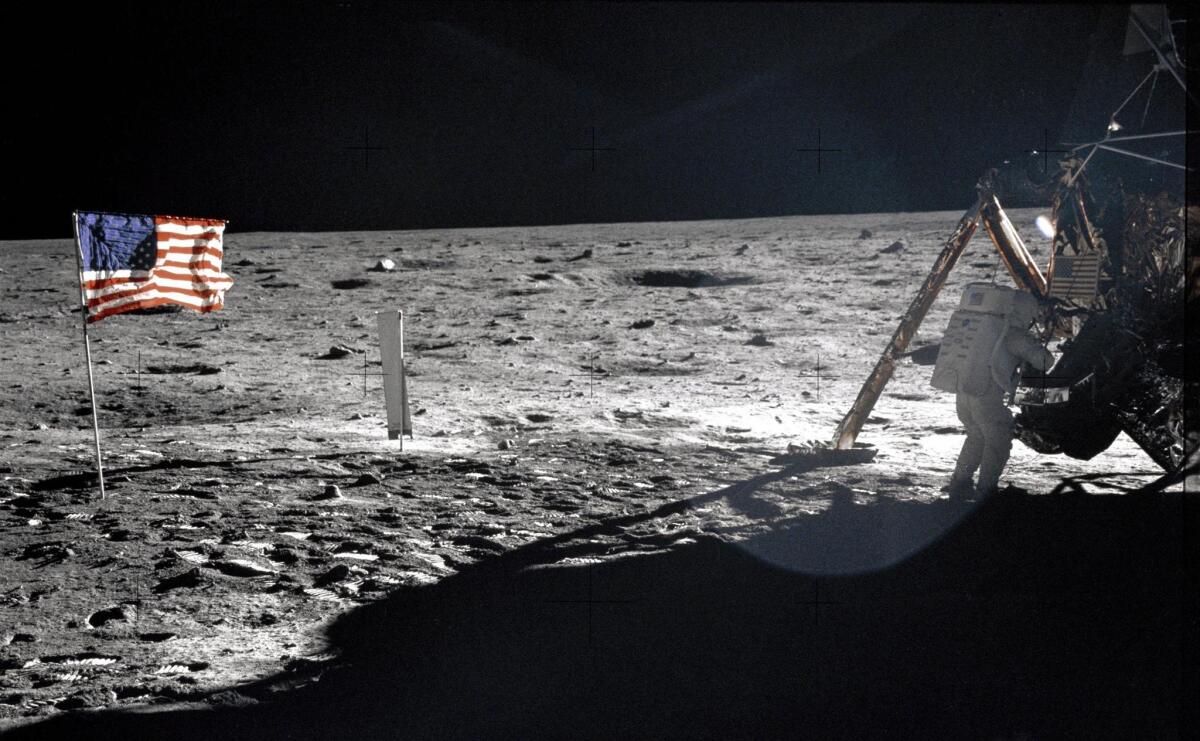
“The space program had the old college football ‘beat-the-Soviets’ idea, but Kennedy actually saw Apollo as his equivalent of the Tennessee Valley Authority and the Grand Coulee Dam of the New Deal,” said Douglas Brinkley, the Rice University historian who this spring published a chronicle of Kennedy and the space race. “He thought technology was truly the new frontier.”
But the 35th president saw poetry and national purpose in it as well, and that poetry and purpose, as much as the liquid oxygen, liquid hydrogen and high-grade kerosene fuel that eventually would make Apollo 11 possible, propelled his vision and the astronauts’ mission.
In his May 1961 address to a joint session of Congress — remarks delivered in the aftermath of the Bay of Pigs fiasco and the disgrace of watching the Soviet cosmonaut Yuri Gagarin become the first human in space — Kennedy described his moon goal: “No single space project in this period will be more impressive to mankind, or more important for the long-range exploration of space; and none will be so difficult or expensive to accomplish.”
A year later, at Rice University, he added lyricism and established his legacy by saying, “We choose to go to the moon in this decade and do the other things, not because they are easy, but because they are hard; because that goal will serve to organize and measure the best of our energies and skills, because that challenge is one that we are willing to accept, one we are unwilling to postpone, and one we intend to win, and the others too.”
How many baby boomer parents — that not-because-they-are-easy-but-because-they-are-hard notion hardwired in their brains — have repeated that very phrase to their children, born long after the last steps on the moon and thus deaf to the historical footsteps of the Apollo 11 astronauts?
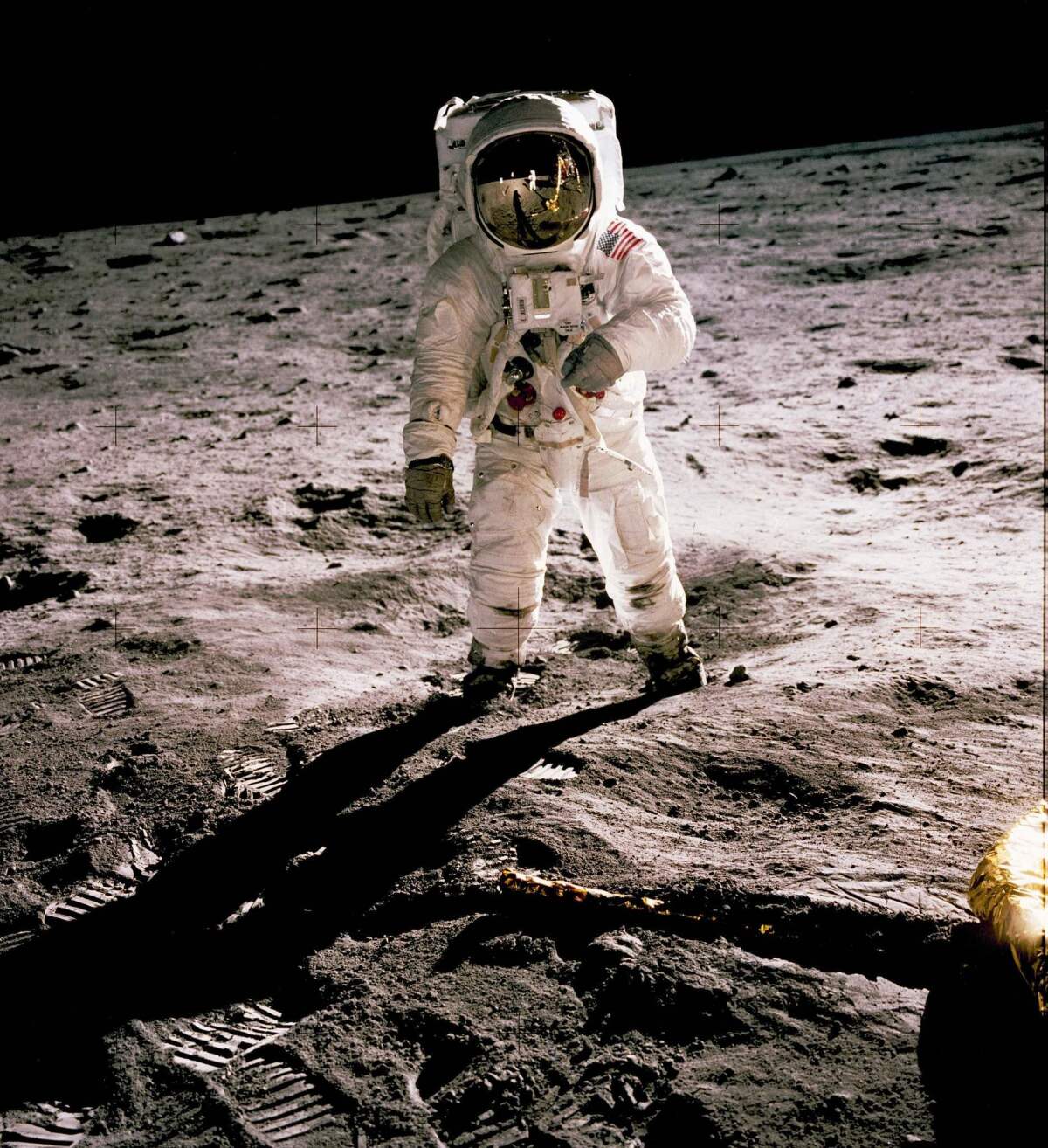
Kennedy’s space speeches were no casual commitment. He understood that the space effort symbolized American optimism and practicality and national purpose. He thought big, and he also thought historically; among his favorite books were Edward Gibbon’s “The Decline and Fall of the Roman Empire” and Winston Churchill’s “Marlborough: His Life and Times.”
He believed the lunar mission was the logical extension of Columbus and Magellan, of Lewis and Clark, of Lindbergh and the Wright brothers. It was no coincidence that Armstrong carried to the moon a swatch of muslin fabric and a piece of the propeller from the Kitty Hawk flight.
But Kennedy also understood that this effort — with its eerie echoes of Jules Verne’s conception of a moon voyage — was an extension of movable type, antibiotics and the harnessing of electricity. (He would not be surprised today to know it was the precursor to the PC and the iPhone.) Most of all, Kennedy believed that this achievement needed to belong to people with America’s values.
In fact, backtrack from July 20, 1969, to Nov. 21, 1963, and the speech the doomed president delivered the day before he was slain. In those remarks, he made it clear he understood that the moon mission was an endeavor not only of engineering but also of romance, and that he understood that his words had helped transform technology into a metaphor for prestige and power.
He made this point clear by deleting, in his own hand, this sentence from remarks he delivered at the Aerospace Medical Health Center in San Antonio. The sentence had been drafted by a speechwriter with his feet on the ground, unaware the eyes of his president were on the skies. “Let us not be carried away with the grandeur of our vision.”
Those words were never uttered.
Now, 50 years after the realization of that vision in the Sea of Tranquility, we might pause from our earthly woes and our worldly cynicism, and be carried away with the grandeur of that vision. For without that vision, we would not have our been-there-done-that smugness, for we might not have been there and we might not have done that.
We did that in an effort that involved 20,000 American companies and 400,000 American workers — much of the work on the second and third stages of Saturn V was performed in California, with major testing in the Sacramento area. The endeavor was the legacy of the workforce and industrial majesty, largely in California but also elsewhere, built during and after World War II and powered by the steep productivity gains of the 1950s.
The progression from Project Mercury to Project Gemini to Project Apollo reflected both an expression of power politics and of the power of politics. Kennedy batted away critics of his plan, including former President Dwight D. Eisenhower, who derided the entire enterprise as “a mad effort to win a stunt race.” Instead, Kennedy regarded Apollo as a “mission into the most unknown sea.”
But many of his scientific advisors worried that U.S. technology wasn’t sufficiently seaworthy for the voyage. Chris Craft, NASA’s first flight director, thought: “Men on the moon; has he lost his mind?”
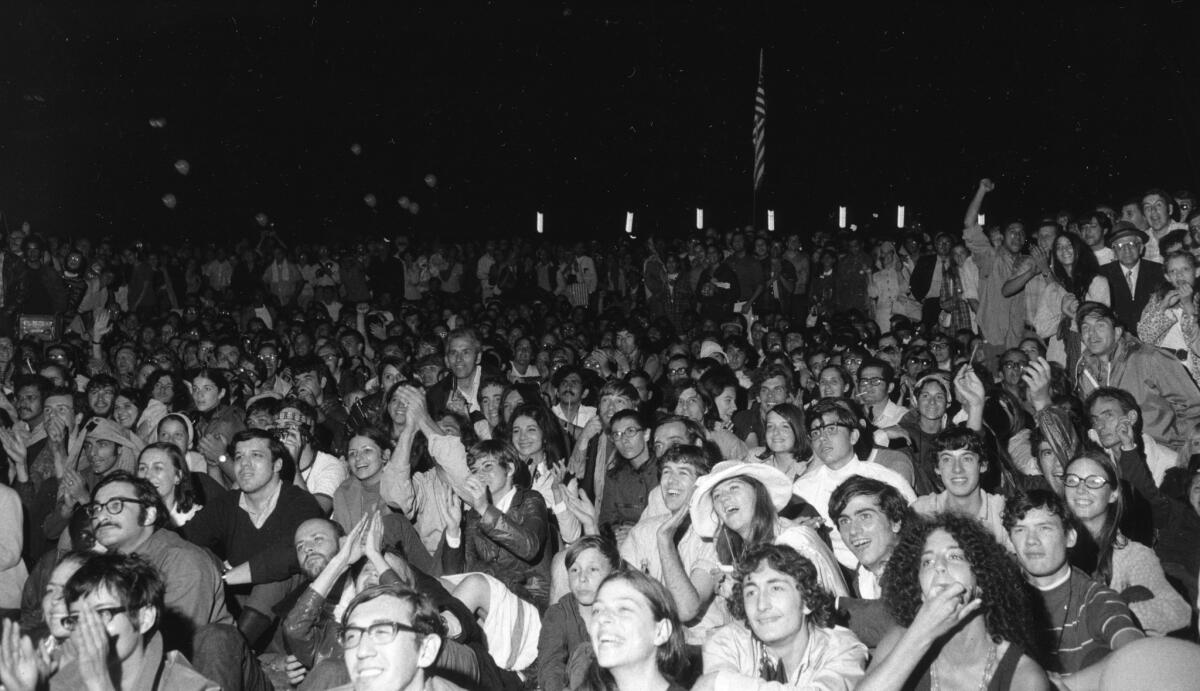
Today the Command Module of Apollo 11 is a relic from another age, 11,700 pounds of aluminum alloy, stainless steel and titanium, built in Downey, Calif., by North American Rockwell. It is a brownish cone twice the height of a human but with evidence of having carried human dreams along with its human cargo. Its surface is scarred, charred and dented, only slightly worse for wear for having hit the Earth’s atmosphere at more than 24,000 miles per hour on July 24, 1969. And when Smithsonian conservators examined the capsule with specialized digital scanners producing high-resolution imagery, they saw some graffiti left behind by Collins:
“The Best Ship to Come Down the Line. Bless Her.”
That ship from space toured the country and the world after the moon mission, and as the anniversary approached this past year it made a celebratory victory tour to Pittsburgh, Houston, St. Louis and Seattle. Thousands flocked to see it.
“Clearly this is a thing of pride for Americans and it is a nostalgic memory for a lot of people who are old enough to remember this as a pioneering step for the United States and for humanity,” said Michael J. Neufeld, a senior curator in the space history department of the Smithsonian National Air and Space Museum. “Unless you’re a space nut, you probably don’t know the details of the landing, and they’re pretty remarkable.’’
The moon’s craters are named for Columbus, Darwin, Diderot, Einstein and Fermi, men whose legacies are now clear. What about the men who landed amid those craters? What about the men who left the Earth in white suits and now have white hair?
“We’re still wondering what this turning point means,” said Vejas Gabriel Liulevicius, director of the Center for the Study of War and Society at the University of Tennessee. “People had the conviction at the time that this would not be the last step but instead that it would open a new frontier. The scientists who were so excited in 1969 would have been stunned to hear in 2019 that we have not returned and have not reached out further in manned space flight.”
He added: “A lot will depend on whether Apollo was the start of something or the last hurrah of that sort of technological change. There are times of very fast transitions — this was one of them, a heroic age — and times of plateaus. Right now we don’t know.”
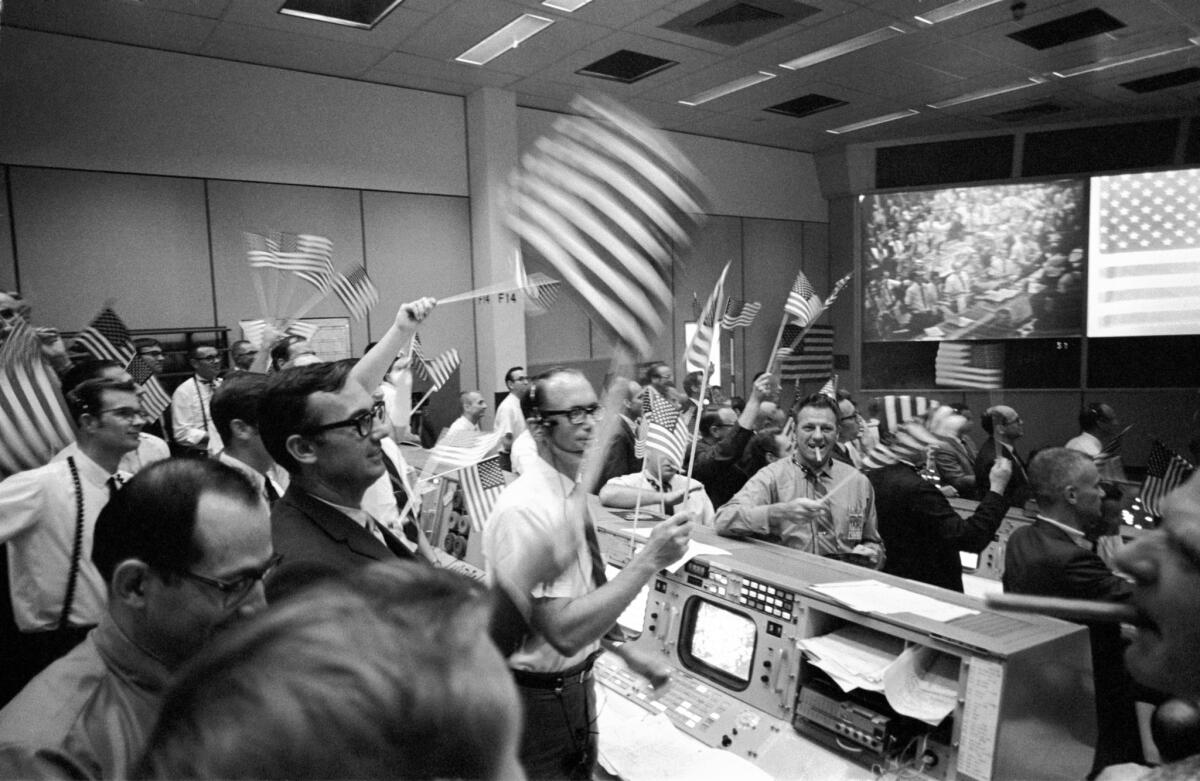
But right now we are turning our eyes moonward again. It is part 1969 commemoration. But it is also part 2019 commercialization. (NASA late last year established a Commercial Lunar Payload Services program.)
These glances are prompted in large measure because of regrets that the prize once won was so swiftly abandoned and because other nations, China and India especially, have aspirations too, heavens to conquer and rivals to impress, or intimidate. Japan plans an unmanned moon mission for next year. Even an Israeli nonprofit sent a vehicle, SpaceIL, to the moon, though it crashed into the lunar surface in April.
And today there are private American companies willing to do what NASA cannot afford.
In May, Amazon Chief Executive Jeff Bezos unveiled plans for a lunar lander with the evocative name Blue Moon, perhaps channeling the Rodgers and Hart ballad (and its moon-crooning about “a dream in my heart”). “We are going to build a road for space,” Bezos said, “and then amazing things will happen.” The Bezos initiative is intended to be the first step toward a space colony.
Part of the new allure of the moon — China is attracting worldwide attention for its aspirations of establishing a moon base, or perhaps a colony, an impressive first step being the recent landing of its Chang’e-4 on the far side of the moon — is to create a way station to the universe.
But another element of the current lunar lure is that exploring the outer edges of the solar system takes so long to bear fruit; the New Horizons space probe launched in 2006, in the middle of George W. Bush’s second term, for example, passed Pluto in 2015, during Barack Obama’s second term. The relative closeness of our own moon has its own psychic gravitational force — one that apparently grabbed President Trump in May when he vowed to put Americans back on the moon by 2024.
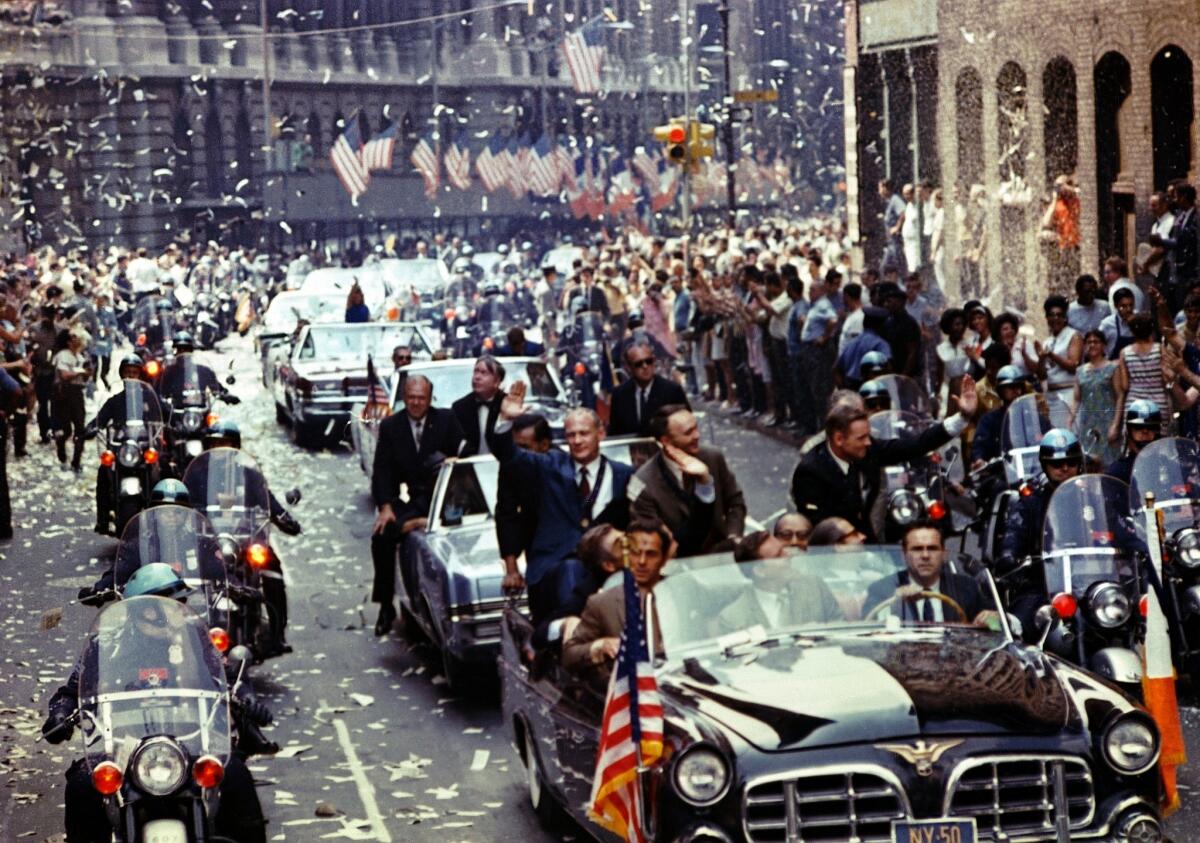
“Under my administration, we are restoring NASA to greatness,” Trump said in a tweet announcing his intention to ask for an additional $1.6 billion in NASA spending to develop Artemis, named for Apollo’s twin sister and apparently intended to carry the first American woman to the lunar surface.
In 1961, James E. Webb, the fabled NASA administrator during the stretch for the moon, had a bold view: “We have the scientists, we have the technology, we have the resources and we have the power and know-how to do the job.” We probably still do, though it remains uncertain whether NASA can accomplish Trump’s task in about half the time the 1960s moon effort required.
Now it is apparent that the fast track Kennedy established for the drive to the moon meant that NASA was able to devote itself to that effort — but to virtually nothing else. What was sacrificed was the space station, which with the proper emphasis, budget and timetable could have been a base camp for further trips to the moon or to Mars. Instead, NASA accomplished the equivalent of a camping trip on the moon.
“We didn’t have the time to do the space station right,” said Roger Launius, NASA’s chief historian between 1990 and 2002. “NASA built a bunch of one-offs. Going to Mars is an order of magnitude more complex than going to the moon. But it would have been within our reach in [these] 50 years.”
When NASA’s 1958 plan for space exploration, drafted in the Eisenhower years, was superseded for the moon race, the space agency received an infusion of funding, attention and glamour that delighted it. “But,” Launius said, “it also meant that NASA couldn’t get some other things it wanted.”
Nor, despite its expectations, could it expect robust public support in the future. An official NASA history of the mission put it starkly but accurately: “Something most NASA officials did not understand at the time of the moon landing in 1969, however, was that Apollo had not been conducted under normal circumstances and that the exceptional circumstances surrounding Apollo 11 would not be repeated.”
The American moon effort had been the natural product of a century of engineering and physics. The 20th century was, after all, also the century of the mechanized death of the Nazi death camps and of the advanced rocketry Germany employed to attack Great Britain. And, unlike the century that preceded it and the century that followed it, the 20th century also was the epoch of ideological competition.
“Both the Soviet Union and the United States believed that technological leadership was the key to demonstrating ideological superiority,” Armstrong once said. “Each invested enormous resources in evermore spectacular space achievements. Each would enjoy memorable successes and would suffer tragic failures. It was a competition unmatched outside the state of war.”
The astronauts were passionate about defeating the Soviet Union in the space war for which they were enlisted. In the end, that did not surprise them.
“But what did surprise them was seeing themselves not just as Americans but quite literally as citizens of the planet,” Basil Hero found in his conversations with the surviving lunar explorers. “They never stopped thinking on a planetary scale. They saw Earth as one living organism and saw all of us as planetary brothers.”
The effect of Project Apollo was, as Ralph Waldo Emerson said of Walt Whitman’s “Leaves of Grass”: “It has the best merits, namely, of fortifying and encouraging.”
It fortified Americans’ confidence at a time of despair, and it encouraged Americans to dream again at a time when they were enduring the trifecta nightmare of Vietnam, racial tension and campus upheaval. As an American endeavor outside of war, Apollo’s only true rivals are the construction of the transcontinental railroad and the building of the Panama Canal. And like the transcontinental railroad and Panama Canal, it made the world smaller, and it tied peoples closer together.
“I’m struck by the frequency of non-Americans talking about when ‘we’ went to the moon — not Americans, but humankind,” said Kathryn Sullivan, the former astronaut. “It was a galvanizing and unifying moment unlike any other moment in human history. The planet was drawn together not by war and chaos, but by a bold expression.”
We went to the moon. Your eyes may glaze over with this month’s hype. But those eyes look out on a world changed, changed utterly, by what Armstrong, Aldrin and Collins saw, and by what they did, 50 years ago, not by war and chaos, but by a bold expression.
Like Loudon Wainwright Jr., may we all be awed by this “completely new step in the evolution of man.” Moreover, Apollo 11 still has the capacity to teach as well as astound.
One detail that has largely escaped attention is a cache of lunar soil samples that was quietly squirreled away half a century ago.
The scientific world knows about the seismic experiments the Apollo crew conducted and about the laser beams that were sent from Earth to help measure the moon’s center mass and the lunar radius. Soon, NASA scientists finally attempt to pry the secrets from the soil samples that have been sealed away, untouched since Armstrong stuffed them into a collection box, never exposed to Earth’s atmosphere, put aside to await new analytic technologies not available in 1969.
More exploring. More discovery, yet another expression of American optimism about the future and of American faith in progress.
Shribman is a special correspondent.
Sign up for Essential California
The most important California stories and recommendations in your inbox every morning.
You may occasionally receive promotional content from the Los Angeles Times.







